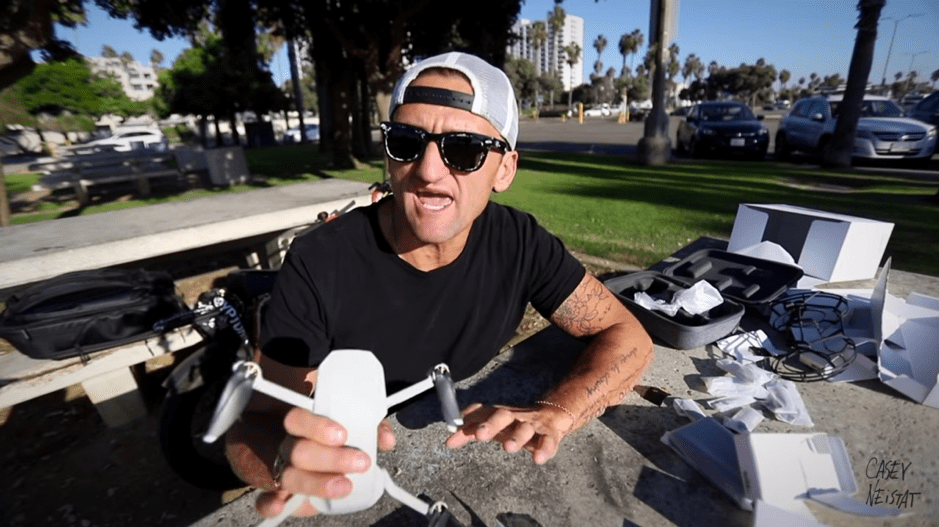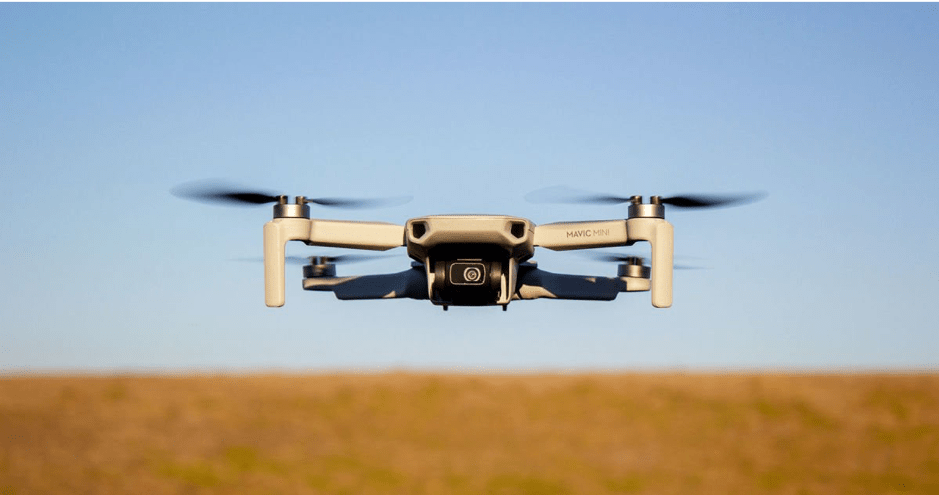By Craig Stewart
DJI have made yet another camera drone which could dictate the marketplace.
The Chinese technology company announced in late October that the Mavic Mini would be the latest addition to their collection of drones and the 249-gram camera drone was released worldwide last week.
The pocket-sized and easy to use to drone has been tipped for big things and many believe it could dominate the drone market.
Mavic Mini Features
The drone has a 30-minute flight time, 4km HD video transmission, a 3-axis gimble and a 2.7k camera.
The drone’s battery allows for around 30 minutes flight time in calm conditions a first for a camera drone of its size.
Like the latest DJI drones, it can be used from your smartphone, connecting to WIFI through a 4KM HD video transmission, providing a unique large transmission range for a drone of this size.
Another improvement is the 3-axis gimble, improving from the limited 2-axis gimble of previous models.
The Mavic Mini also possesses a high quality 2.7k camera, however, this maybe limited for professional use with a higher resolution more desirable.
Portability
“Weighing under 250 grams, the Mavic Mini is almost as light as the average smartphone. This makes it exceptionally portable,” DJI said upon its release.
This is one of the drone’s main features, as the arms and propellers are foldable making it a fraction of the size of the latest iPhone and very travel friendly.
 Comparison of size between the Mavic Mini and the latest iPhone. -Source @TatianaKing on Twitter
Comparison of size between the Mavic Mini and the latest iPhone. -Source @TatianaKing on Twitter
Price
UK customers can pick up all this tech for £369. For this price customers get the drone, the remote control and the flight battery.
It also represents better value for money as the Mavic Mini is around £30 cheaper than the DJI Spark which was released in 2017 but has some noticeable improvements such as the camera, with has a much crisper 2.7k resolution compared with the 1080p of the Spark.
The Mavic Mini also has almost twice the flight time, with the Spark’s only lasting around 16 minutes. The Mini is also lighter, weighing just 51 grams, and has the more advanced 3-axis gimble.
Flight Restrictions
DJI have specifically built the drone to the exact gram in order to avoid FAA regulations.
In the US, anyone who owns a drone 250 grams or heavier must partake and pass a safety test in order to lawfully use a drone.
All aircraft must be registered with the FAA although the DJI have found the loophole with the Mavic Mini, as it doesn’t have to be registered and would not need a safety test according to US law.
These safety tests and regulations have been proposed to the UK government, although currently there isn’t any mandatory tests or laws to abide by in non-restricted airspace.
The Reaction
Popular Youtuber, Casey Neistat, reviewed the product in his Tech Tuesday series on his YouTube channel, in which he compares the Mavic Mini with the Mavic Pro 2.
 Casey reviewed the drone on his Youtube channel. -Source: Casey Neistat Youtube
Casey reviewed the drone on his Youtube channel. -Source: Casey Neistat Youtube
From this, Neistat thinks the Mavic Mini is the best value for money drone for beginners and non-commercial video makers.
“The video quality on it isn’t just good enough, I think it’s very good. When you combine that very good with that insane price point, it seems like a big winner.”
The Vlogger questions how the Chinese technology company can sell such an advanced drone for such a low price and continue selling their other camera drones successfully,
“How does this not cannibalise all the other expensive drones that DJI sells?
How is any other drone manufacturer supposed to compete with DJI when they can make something that small, something that easy to fly. With that good a quality for 399 bucks”
 Neistat compared the footage recorded from the DJI Mavic Mini and the DJI Mavic Pro 2. – Source: Casey Neistat YouTube
Neistat compared the footage recorded from the DJI Mavic Mini and the DJI Mavic Pro 2. – Source: Casey Neistat YouTube

